Quick! Name another anime besides Sailor Moon that began airing in 1992!
Pretty tough, huh? Well, that’s probably because out of the forty anime series to debut in 1992, only six of them lasted more than a year — many surviving only a few months.1
While we all know Sailor Moon today as a global phenomenon, it’s easy to forget that the series was by no means a guaranteed hit. In fact, many of the parties involved in the series’ creation were so caught off guard by its success that they didn’t even have products lined up to capitalize on it!
So how did Ms. Takeuchi and co. manage to draw so many fans to Sailor Moon? And, possibly even more importantly, how did the critics react to the series?
Today we’re going to travel back to late 1991 to see what the manga/anime landscape looked like through the eyes of a budding shojo fan. Spoiler: even before the series aired, people were making fun of Tuxedo Mask’s name!
According to the many interviews both Ms. Takeuchi and her long time friend-and-editor Fumio ‘Osabu’ Osano have given over the years, Sailor Moon was meant from the very start to be a multimedia production, though this was hardly anything new for the juggernauts of Kodansha and Toei.
In fact, the very show that Sailor Moon replaced, Goldfish Warning!, was already an established Nakayoshi hit when it was given the all-important “golden hour” Saturday 7pm time slot.2 Alas, even with its built in audience, the series runners felt the anime had run its course and were looking for another Nakayoshi property to replace it before deciding to go with something new and untested: a spin-off of a series called Codename: Sailor V.
Nakayoshi readers — and the world at large — got their very first look at this new series in November 1991, though the series was then known as Pretty Soldier Sailor V.3 While Ms. Takeuchi clearly notes that the main character is a girl named Usagi, it seems as if she was originally toying around with the idea of carrying over the Sailor V moniker.
Considering this was a mere month before Sailor Moon would be carried in Nakayoshi, it’s quite surprising just how late in the game changes were being made to her character design.
And speaking of character designs, Luna was still a fluffy white cat at this late stage (as late as November 5, 1991 according to her handwritten notes) while Mamoru’s design was either undecided, kept under wraps, or a little bit of both.
In this first reveal, Ms. Takeuchi gives a brief interview in Nakayoshi to give fans a taste for what’s to come:
Editor (Ed): What will the story be about?
Naoko (N): It’ll be a really cool story that’s totally outrageous, with some romance thrown in.Ed: What’s the main character like?
N: “Usagi” is her name. She’s a crybaby, but she has a sweet and innocent personality.Ed: It sounds like there’ll be “transforming” involved. When will she transform?
N: When “the Earth is in peril.”Ed: What kind of enemies will she face?
N: Incredibly beautiful women and remarkably handsome young men… at least that’s what I’m thinking!
While not earth-shattering,4 this is essentially all that manga fans had to go on to decide if they wanted to read this new story or not.
But what about the anime?
Well, things are a little different there. Unlike a monthly manga compilation that you control, with anime all Toei could do was release the promotional art and information to the magazine publishers and leave them to provide the hype.5 The March 1992 issue of Newtype magazine provides a very interesting look at how the first episode was received.
Right from the word “go,” it’s clear that Newtype didn’t know how to classify Sailor Moon, ultimately describing her as a “new type of magical girl.”6
The series description itself is also quite interesting as it continues to describe her as a “magical girl” while also conceding that the show will apparently buck the normal shojo trend of the usual mixture of action and comedy scenes.
Most interesting to me, though, is that the summary says that:
The talking moon cat Luna, the ever-sarcastic Mamoru Chiba, and the mysterious Tuxedo Mask all come to her aid as she fights against the handsome young Jadeite and the youma under his control.
While I would never once dare to assert that Jadeite is not a handsome young man, it’s certainly an interesting way to describe the character, especially when you consider that he’s treated very much like an older adult later one. But even more interesting than that is the fact that Mamoru is referred to as one of Usagi’s allies. That’s either a horrible spoiler, or someone just figured all the cast members must be on her side.7
What’s more… not a single mention of Naru??
Later on, the magazine provides a review of the show’s very first episode — which was still untitled at the time of writing.8 The editors praised the show for breaking out of the trope of being just superheroine vs. monsters story and creating a slice-of-life story based in Azabu-Juban that showcases trends young girls can relate to.
They also comment that Tuxedo Mask’s name is quite lame vs. how cool he is as a character.
Am I the only one who likes the name? Maybe it’s too literal for some people.
Anyway, the review of the episode itself is written from Usagi’s point of view and follows along with the story we all know and love, except for one point: it states that after transforming, she follows Luna’s directions and uses goggles to see that Naru is under attack. A deleted scene? Misremembered from the manga? Hard to say.
While Nakayoshi started off strong and gave Sailor Moon a massive push in the form of giving it the cover of its debut issue and full-color inserts, it seems that the anime wasn’t given quite the same publicity. Obviously this is just one source and the competing anime magazines may have had a different take, but I’ve yet to be able to find much of a strong Sailor Moon presence in the first few months of the anime’s life in Animedia or Animage either.
In any case, it’s interesting to see how the series was reported on back before it was the hit we know today!
Now, a question for you: what do you think was going on with the Pretty Soldier Sailor V title? Was Ms. Takeuchi simply going to phase Minako out of existence, or were there going to be multiple Sailor Vs out there, Green Lantern style? I’m really curious on this one.
References:
- See 日本のテレビアニメ作品一覧_(1990年代)#1992年(平成4年) (Wikipedia) ↩
- See Goldfish Warning! (Wikipedia) ↩
- See the January 1992 issue of Nakayoshi ↩
- I suppose earth-shattering would count as Earth being in peril, no? ↩
- Though let’s be honest, magazines are a big “pay to play” industry. Source: I’ve coordinated paid promo articles with several magazine publishers. ↩
- Pun almost certainly intended. ↩
- Mamoru was kind of a jerk until… I dunno, Sailor Moon S? He was brainwashed by the Dark Kingdom in the latter part of the first season, he had no memories during the Makaiju arc, he was a mega jerk during the Black Moon story, so… yeah, Sailor Moon S. ↩
- See p. 72 of the March 1992 issue of Newtype ↩
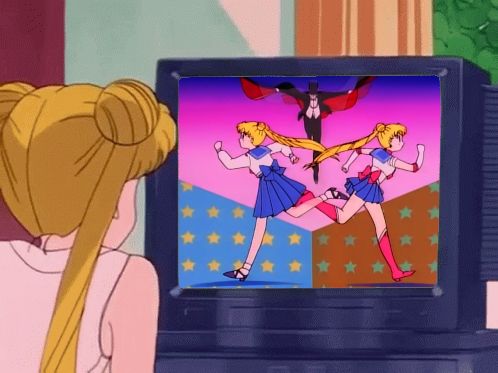
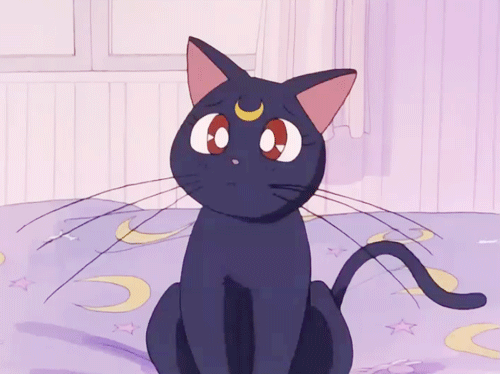
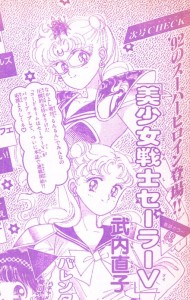
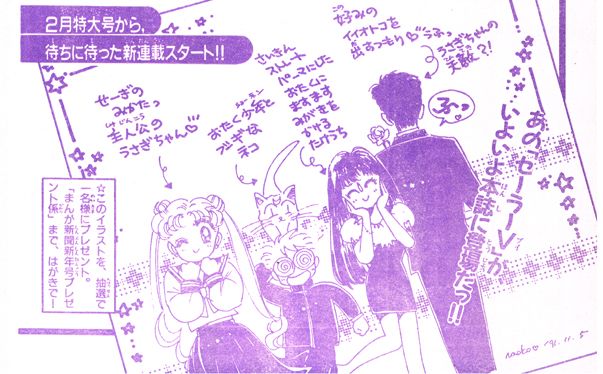
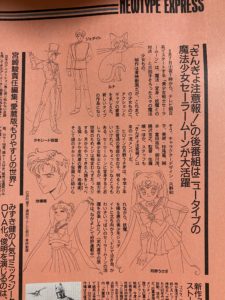
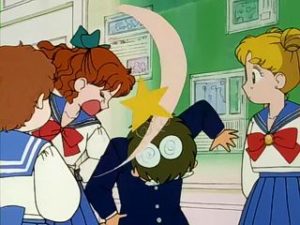
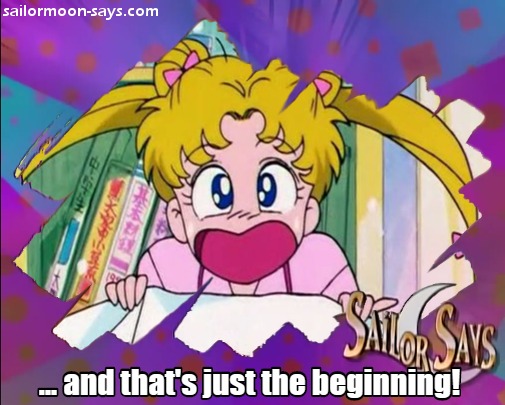

As much as a Sailor Moon nerd as I am, I admit that this is the first time I’ve heard that the manga was going to be called Pretty Soldier Sailor V.
I’m fairly certain I’ve seen that design for Usagi, though.
Even all these years later there are still more secrets to be discovered. I bet even Naoko has forgotten a lot of the early days.
Thanks for uncovering this!
I don’t think mamoru was a jerk in R
The whole break up thing…?
I think it was a case of doing the wrong thing for the right reasons. In context, when I look at his life experiences, I can understand why he reacted the way he did even if he didn’t react the appropriate way. In contrast being a jerk imo requires knowingly doing the wrong thing for the wrong reasons and not caring anyway.
Interesting! It’s always tricky getting into the early phases because Naoko seems to have a lot of half-formed ideas that a lot of fans turn into permanent headcanon. Seems like she probably wanted to redesign Sailor V at first before coming up with a more unique character and STILL use the original Sailor V.
I liked Tuxedo Mask’s name from the get-go. Sure it is literal but that’s what makes it so unique. Also if there was never a Tuxedo Mask, could there ever have been a “Tuxedo Melvin”?
I’m not sure if you’ll see this comment since it’s an older article, but I’m wondering what the intended demographic for the show was when it initially came out. I feel like that’s very closely related to the topic of this article, but it’s still not really clear to me. I always assumed the target demo was teenage girls, since the main characters of the show are teenage girls. But I was watching the Viz dub recently, which as far as I understand is a pretty faithful translation of the original anime, and they say some pretty dark things. So I was just wondering if the show *is* intended for and marketed to adults, or if maybe they just wanted it to have universal appeal. Thank you so much if you see this, I absolutely love your page! <3
The intended demographic for the anime was young children, maybe from 5-10 years old. This is pretty clear from the toys/products released and other lines it was cross-promoted with.
The manga skewed a bit older, but not much: I’d say from 8 to 12/13-ish, judging by Nakayoshi’s readership.
Isn’t it odd how that works? It seems so strange to many of us in western countries.
I’d even say the anime was marketed for 8 to13-year-olds here in the USA with the manga maybe going so far as to be marketed towards 13 to 18-year-olds since it was printed alongside stuff like Peach Girl.
When it was airing on Cartoon Network, Chibi-Usa/Rini was very unpopular with teenagers since she seemed like such a brat, but one of my little cousins was obsessed with “Rini”.
That explains why they used Chibi-Usa so heavily in Japan.